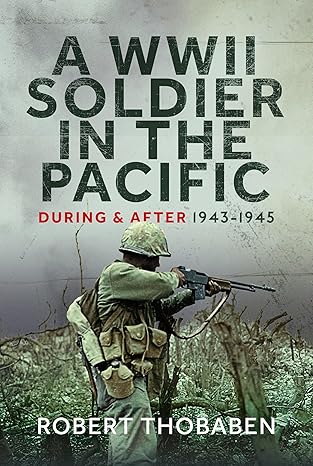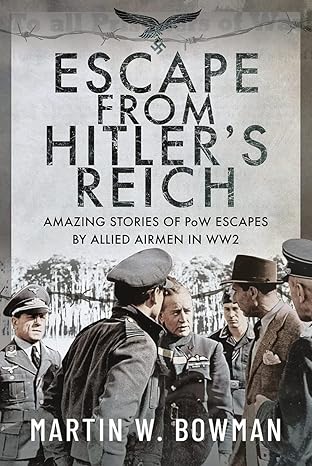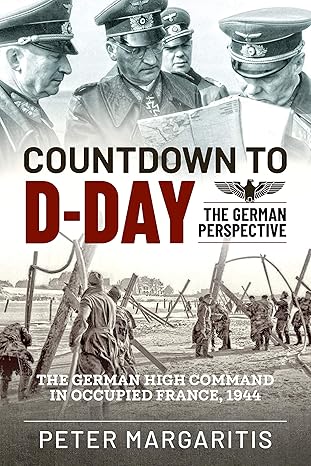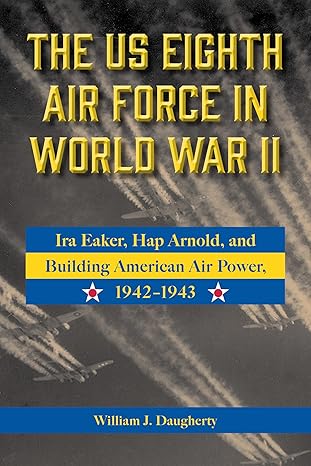Tiger 131: The Mysterious British reports
By Bruce Oliver Newsome, Ph.D.
Tiger 131 is the most famous tank in the world: the first of its type recovered to Britain; the most studied and photographed tank in Allied intelligence; and the only running Tiger in the world today.
The British reports have always been puzzling: their numbering and dating suggest that some reports are missing or were never completed; some reports contradict others; some are not dated at all; beautiful drawings and paintings were created, but appear without captions. Now, after a survey of all surviving reports, from Britain to North America, their original condition can be revealed.[1] The implications for Allied intelligence are not pretty.
What is Tiger 131?
The Tiger was the product of a long program by that name, with several projects. In fact, the program produced two different models of tank named “Tiger.” The other type was a losing bid by Ferdinand Porsche: he produced at least one pilot tank and one full-production tank in the program, plus another 90 hulls that were converted into self-propelled guns. Both types were designated as Panzerkampfwagen VI, meaning “armoured fighting vehicle” or “tank,” sixth model. The two types were differentiated by parenthesizing their respective design authorities/assemblers. Thus, the Porsche Tiger was abbreviated as “PzKw. VI(P).” The winning type, supplied by Henschel, was abbreviated as “PzKw. VI(H).” The War Office’s section for technological intelligence (MI10) read about a Tiger in decrypted signals in September 1942, and confirmed it in January on the battlefield, but did not learn about the Porsche until about May 1943. In December 1943, MI10 reported a captured document, indicating a change of designation to “PzKw. Tiger, Model E.” This explains British amendments, by hand, of the titles of their official reports, from “H” to “E”. However, in May 1945, Henschel’s chief research engineer told them that the “E” was used exclusively by the Weapons Office.
The particular tank brought to Britain was accepted from Henschel by the German Army in February 1943. It was immediately issued to 504th schwere Panzer Abteilung (Heavy Tank Battalion), which was still incomplete and in transition to Tunisia, where the Germans had intervened to forestall the Western Allied invasion in November 1942. The unit numbered the tank using a convention common to German tank units of the time: the numbers “131” refer to the 1st Company, 3rd Platoon, first tank of the platoon (normally the platoon commander’s mount).
How was Tiger 131 captured?
Tiger 131 was already a battle-scarred veteran before, on 23rd April 1943, it responded to a British attack on a close collection of eight hills, overlooking the highway to Tunis and the Medjerda River. The evidence suggests it was the only Tiger committed. For two days, it fought parts of four battalions of Churchill tanks and six battalions of infantry.
It was abandoned late in the day of 24th April, in a position from where it had commanded the road across the tallest of the hills (identified on wartime maps by its summit, in meters, as Point 174). Prior damage had left the turret traverse and gun elevation sticky and inconsistent; the final straw was surely a freak shot that buckled the roof over the driver’s head and jammed the turret. The Germans likely intended to recover the tank if the hill could be recaptured, or to demolish it if recovery were impossible, but they never had another chance. British infantry occupied the summit, under artillery and air attack, until the final Allied offensive started on 6th May. Hours later, engineers arrived to recover Tiger 131.[2]

|
||
| Tiger 131, as differentiated by the step welded to the nose and the filled apertures above the driver’s visor, takes a track in April 1943. This is the only known German photograph of Tiger 131. It proves extensive damage from high-explosive shells: the top-most smoke discharger on the turret’s left side is missing; and the cupola, upper edge of the turret, mantlet, and driver’s plate are scarred, particularly to the main armament’s left and in its shadow. | ||
What happened to Tiger 131 after capture?
Tiger 131 was recovered by the workshop that was serving the same two brigades of Churchill tanks that had fought against it. This workshop was operating in the open air on a small plain a few miles south-west of the battle- field. Here it restored Tiger 131 to working order, although without proper documentation. Automotively, Tiger 131 seems to have needed little more than fluids. Turret control was partially restored by working out the burr on the turret ring. The main structural repair was a welded plug in the buckled hull roof. The damaged hatches in the turret and the missing smoke discharger were replaced with parts salvaged from other Tigers. The kinetic damage to the wheels, track guards, turret stowage bin, and centrifugal air cleaners was never repaired.
The restoration was probably scheduled around a visit on 14th May by the commander of 1st Army and some technicians from the regional commands. At the same time, an Army Film and Photographic Unit filmed Tiger 131 running around a cross-country course and posing behind cover. The film was used to train soldiers in recognition of the type, but also to propagandize its supposed flaws.
Tiger 131 spent the rest of May corralled with other captured equipment for casual inspection by personnel camped nearby or passing through. On 24th May, it was driven to Tunis for display. Its visitors there included the British Prime Minister (Winston Churchill) and the principal British civilian and military decision-makers (2nd June), and King George VI (18th June).
How did Tiger 131 get to Britain?
Technicians had urged home authorities to get Tiger 131 to Britain since May, but it waited months for shipping, with no priority. The only advantage of this delay was that more time was available for the collection of equipment for testing in Britain. This collection was performed by Major A. Douglas Lidderdale (REME: Royal Electrical and Mechanical Engineers), who had commanded the workshop that had recovered, restored, and exhibited the tank, but was now dissolved. He also used the time to draft a report.
Tiger 131 was transferred between various inappropriate ports and ships until it finally left Tunisian waters on 20th September, resting atop a cargo of iron ore. After one stop in Gibraltar, on 8th October it reached the cargo’s destination – Glasgow, which is as far as any British port from the tank’s destination.
What happened to Tiger 131 in Britain?
The equipment reached the Department of Tank Design (DTD) at Chobham Heath in Surrey on 19th October; Tiger 131 itself, and Lidderdale, reached the School of Tank Technology (STT) at Chobham on the next day. Both were departments of the Ministry of Supply; they would now co-operate in the exploitation of Tiger 131, but in a distracted and chaotic way that lasted into 1945, still without completion.
Lidderdale completed his draft report as the first official report (November 1943), but Tiger 131 was again diverted for political and propagandistic purposes. On 15th November, it was carried to London for another audience with the Prime Minister and entourage, even though he had quietly travelled overseas already. Then it left on a tour of British cities as part of a campaign to raise funds for the war effort, before returning to Chobham a few days before 1944, by when its guardians were on leave. Lidderdale then started a new assignment, and never worked again on Tigers or any technical intelligence.
Unfortunately, no plan has survived for the investigation, although clearly the reporters were working to a plan, such that some part numbers and section numbers were reserved for reports that were never completed. Some reports seem to have been commissioned opportunistically: for instance, an inertia starter was the first automotive part to be reported, even though the engine, gearbox, and steering had been identified in Tunisia as most advanced.
By then, DTD and STT were preoccupied with development and trials of Allied tanks and variants in time for the invasion of North-West Europe in June 1944. This helps to explain the use of junior authors, whose affiliations were given as RTR (Royal Tank Regiment) or RAC (Royal Armoured Corps), not technical branches.

|
||
| Churchill, Anthony Eden (Foreign Secretary, under dark hat), General Harold Alexander (18th Army Group, behind gun), Field-Marshal Alan Brooke (Chief of the Imperial General Staff, on turret, behind Alexander), and Lieutenant-General Kenneth Anderson (1st Army, next to Brooke) descend the front of Tiger 131. This photograph gives a close view of the emblems painted in late May: 1st Army’s shield was painted in white, with the red cross of St. George and a sword; 25th Tank Brigade’s sign consisted of two black triangles opposed vertically. The same emblems were painted on the left (nearside) rear mudguard. | ||
What are the official reports on Tiger 131?
STT published its first internal reports in January 1944, including some by Lieutenant Peter Gudgin. He was awaiting a course at STT, after being invalided home from Tunisia. Although he did not claim so at the time, decades later, after retirement, he claimed that Tiger 131 was the Tiger that had knocked out his tank and hospitalized him in his first battle. He amended Lidderdale’s documents to re-locate the place of recovery to conform with his own battle, he re-captioned photographs, and he influenced the Tank Museum to paint out the emblems associated with its real captors, and to credit his own unit and brigade. These false attributions marred his and the Tank Museum’s books on Tiger 131 (published as recently as 2011), which included some excerpts from the official reports.
Nobody seemed to ask Gudgin about why he had not questioned Tiger 131’s provenance in wartime, or why he never mentioned Lidderdale in his comments, or why the surviving reports show that his reports (all dated February 1944, on the fighting arrangements and stowage) were addended by the Gunnery School in November 1944.
The reports continued at glacial pace. The reports on fighting arrangements were numbered as sections to the second “part” of the investigation, where the first part had been a “general description,” that often paraphrases Liddderdale.
The third part was never made: it might have been allocated to survivability. The fourth part was titled “Power Plant.” The first report on the engine waited until September 1944, and was just a short “general description.” The “detailed description” is not dated but must have followed later, possibly in 1945. The third and fourth sections were never made: the fifth section was on the dynamo, the sixth on the inertia start.
No clue has survived to explain what Parts 5 though 8 would have covered, but likely some would have described mobility. No mobility trials were possible after the engine and a suspension arm broke in March 1944; they were never repaired.
A Part 9 survives, on “Special Devices and Equipment,” with two sections (on the automatic fire extinguisher and ventilation), of which the last is dated September 1944.
This was too late to influence wartime tank design. In any case, we have no evidence that Allied tank designers cared to be influenced. Consequently, while the Western Allies knew a lot about Tiger by 1944, Western tanks changed little. Western tank users were never convinced that their tanks were the equal of Tiger, even though Tigers continued to be used until the end, without change in armament or armor.

Buy from Amazon |
| * * * |
Show Notes
Footnotes
[1]. See: Bruce Oliver Newsome, ed., Pzkw. Tiger: The Official Wartime Reports, Coronado, California: Tank Archives Press, 2020.
[2]. See: Bruce Oliver Newsome, The Tiger Tank and Allied Intelligence, Volume III, Tiger 131: From Africa to Europe, Coronado, California: Tank Archives Press, 2020.
| * * * |
© 2025 Bruce Oliver Newsome, Ph.D.
Published online: 01/11/2020.
Written by Bruce Newsome, Ph.D.
About the author:
Bruce Oliver Newsome Ph.D. is Lecturer in International Relations at the University of San Diego. He served in the British and US Army reserves, latterly on M1 Abrams tanks. As a policy scientist at the RAND Corporation, he worked to improve Army acquisitions, then taught at the Defence Academy of the United Kingdom.
* Views expressed by contributors are their own and do not necessarily represent those of MilitaryHistoryOnline.com.

















